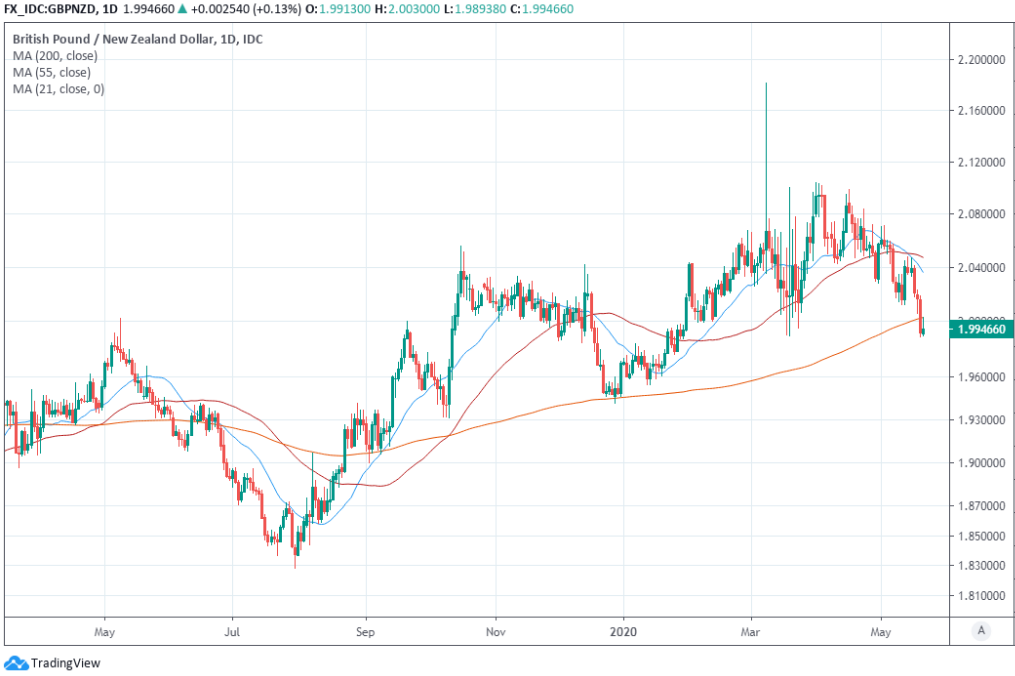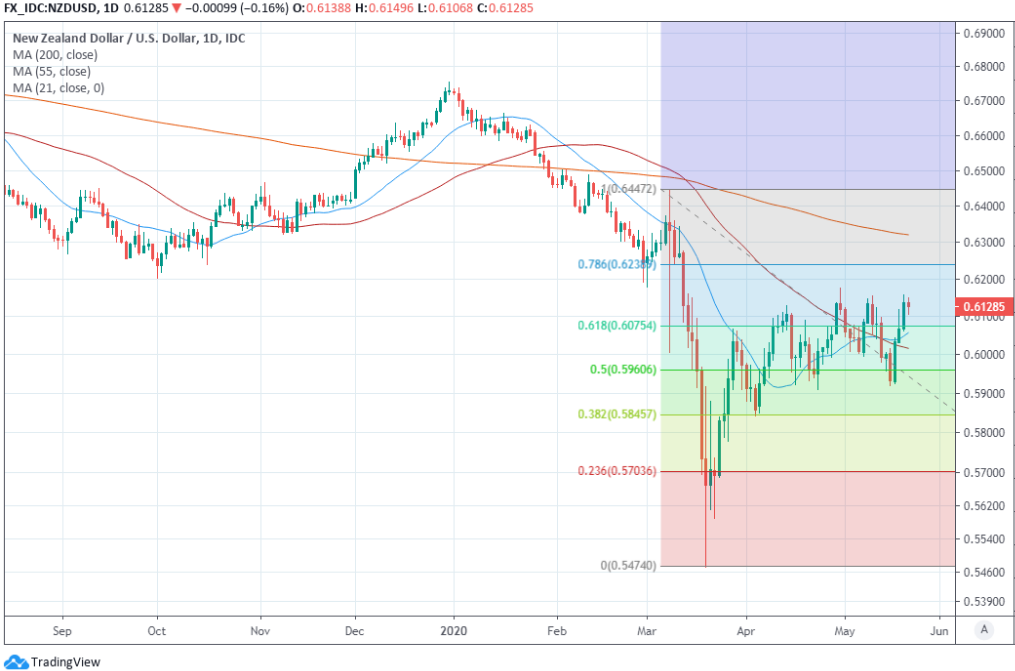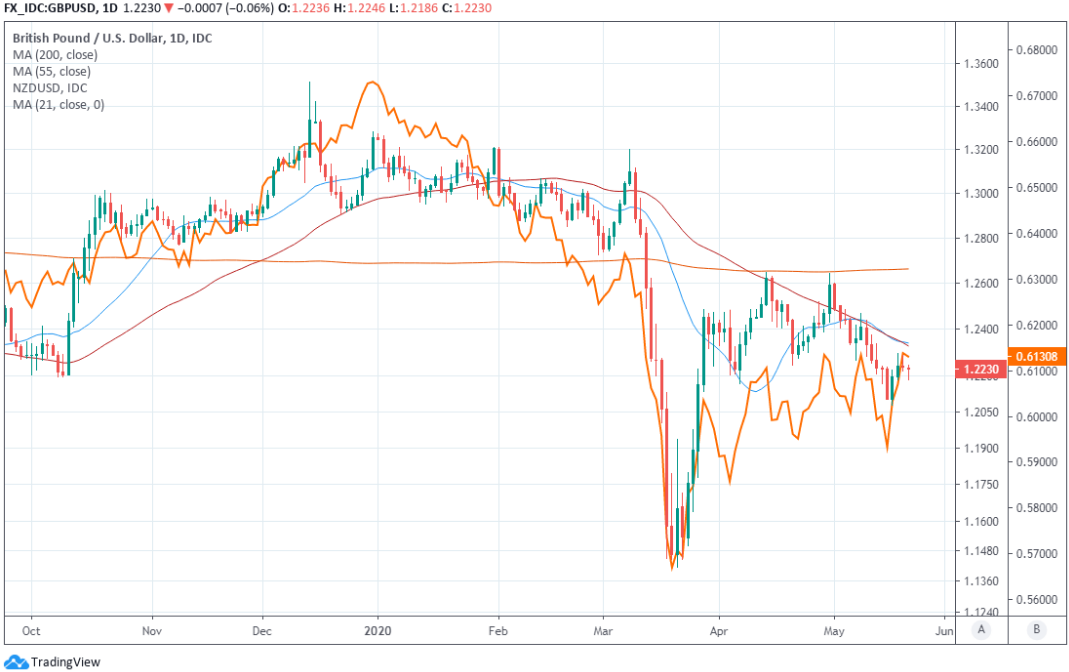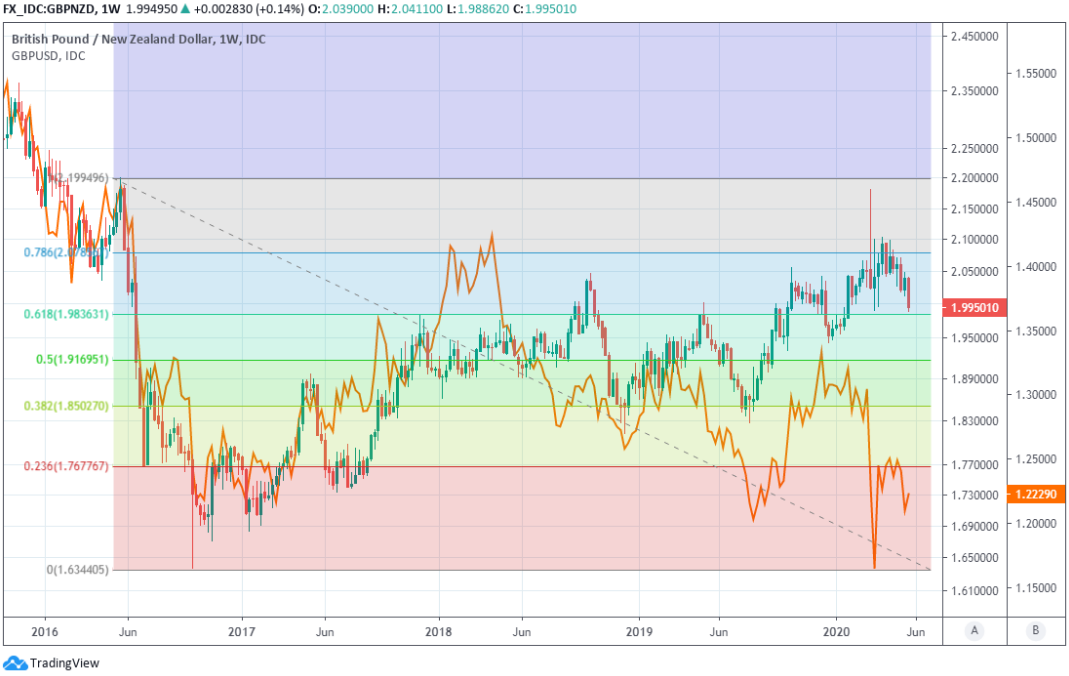Pound-to-New Zealand Dollar Spike to Fade as BoE Also Turns to Voodoo Monetary Policy
- Written by: James Skinner
-GBP/NZD spikes back above 2 handle on UK data and NZ weakness.
-But new lows just matter of time given GBP's dire short-term prospects.
-Forecasts for negative RBNZ rates pushed back as BoE changes view.
-BoE could stir voodoo policy storm as Brexit fears rise in middle of June.

© Westpac
- GBP/NZD spot at time of writing: 1.9916
- Bank transfer rates (indicative): 1.9219-1.9358
- FX specialist rates (indicative): 1.9617-1.9737 >> More information
The Pound-to-New Zealand Dollar rate spiked Thursday on better-than-expected UK economic figures but with voodoo monetary policy becoming fashionable at the Bank of England (BoE) as well as Reserve Bank of New Zealand (RBNZ), fresh losses could be just around the corner.
Sterling received an almost-rate bid Thursday after IHS Markit PMI surveys rose faster than was expected for the month of May, indicating the beginnings of an economic recovery might not be far off and prompting a spike in a Pound-to-New Zealand Dollar rate. The Pound was the second best performing major currency, trailing only behind only a U.S. Dollar that rose as stocks and some commodities softened amid fresh tensions between Washington and Beijing.
But the British currency remains the worst performer this month and is widely expected to see new lows against the greenback and others in the weeks ahead, which could be bad news for the Pound-to-New Zealand Dollar rate.
This is unless the RBNZ is able to kill off the rebound that's lifted Kiwi Dollar more than 4% against the greenback this week even after Thursday's widespread declines in antipodean exchange rates are taken into account. That's seen as less likely following media interviews by RBNZ Governor Adrian Orr and Monetary Policy Committee colleagues, which has seen forecasters push back projections for a shift to negative rates at the bank.
"We expect that the RBNZ will expand its Large Scale Asset Purchase (LSAP) programme to $70bn at the June OCR Review, and $80bn at the August MPS," says Dominick Stephens, chief economist for New Zealand at Westpac. "Our exchange rate forecast is higher than the RBNZ’s, even though we expect OCR cuts and a bigger LSAP than the RBNZ is forecasting. This is the key reason that we think an expansion to the LSAP and a negative OCR will be required."
Above: Pound-to-New Zealand Dollar rate spikes after falling and closing below 200-day moving-average.
Stephens tips the RBNZ to cut the cash rate below zero in April 2021 after scrapping an earlier forecast for it to go negative from November 2020, but he also expects Governor Orr to announce another increase in the RBNZ quantitative easing (QE) programme next month and again in August, which would make for three back-to-back expansions of the currency-crushing policy since its March 23 introduction.
Quantitative easing (QE) crushes bond yields and in the process reduces borrowing costs for the real economy but is not normally taken well by currencies. However, the Kiwi Dollar has climbed steadily since the RBNZ first resorted to this particular form of voodoo policy on March 23.
That's a headache for the bank because currency strength not only threatens to pull inflation down and away from the target that was only just achieved in the opening quarter for the first time in years, but also acts as a headwind for the economy by making exports less competitive. This headache explains why Stephens and others see the RBNZ resorting to a negative interest rate policy that some say could "kill the NZD."
"Without these additional RBNZ measures, our inflation forecast would be even lower," Stephens says. "Without negative interest rates or an expansion to the LSAP, we think the exchange rate is more likely to rise over time, for a number of reasons: NZD/USD is currently well below its long-run inflation adjusted average. The NZD tends to rise when global risk sentiment improves. We expect risk sentiment will indeed improve as the Covid crisis fades."
Above: NZD/USD dips after besting 61.8% Fibonacci retracement, bringing 78.6% retracement at 0.6238 into view.
Stephens also says New Zealand has "fared well in the face of Covid, and has a very strong fiscal position compared to many countries," which explains how and why NZD/USD has risen more than 10% from its lows on March 23. New Zealand didn't contract the coronavirus to the same extent other major economies did and had little national debt to begin with.
This means damage caused by the virus is likely to be less than that seen elsewhere and the recovery out of the economic trough faster, even more so with China's economy also recovering from its own run-in with the pneumonia-inducing disease. That's a recipe for New Zealand Dollar strength if there ever was one. Similar is true in Australia.
"Sterling's no longer the world's dominant currency and no longer affords exorbitant privilege to the UK government, but it does afford some privilege. Abusing that would have long-term consequences. In the meantime, the more they talk about negative rates and the more the UK seems committed to leaving the EU this year, whether there's a deal or not, the more EUR/GBP will be under upward pressure," says Kit Juckes, chief FX strategist at Societe Generale.
A rising NZD/USD can put the GBP/NZD rate under pressure even on the days when GBP/USD isn't falling, and fall that latter exchange rate is expected to as the June 18 BoE and European Council meetings draw near. There the BoE is expected to increase its own QE programme while the EU meeting might see Prime Minister Boris Johnson incite 'no deal' Brexit fears.
Above: GBP/USD at daily intervals, now lags NZD/USD rate.
The BoE needs a weaker currency which might explain why Governor Andrew Bailey told the Treasury Select Committee this week that he's changed his views on negative rates and now considers them part of the bank's toolbox, which wounding Sterling. Reiterating or expanding on those comments in June would compound the Sterling weakness that results from any QE increase.
"It is not clear yet that they will be introduced. At the very least though, the heightened uncertainty over negative rates policy will remain weight on the pound," says Lee Hardman, a currency analyst at MUFG. "The re-emergence of Brexit concerns and negative rate speculation are the main drivers of recent pound underperformance both of which appear set to persist in the near-term."
BoE's rhetoric shows the RBNZ isn't the only one with a penchant for 'jawboning' its currency, although speculation about negative rates is just one ingredient in the noxious cocktail that risks pushing the Pound-to-Kiwi Dollar rate down into a 1.9285-to-1.9756 range over the coming weeks.
Brexit is also back in the picture too.
"Limited progress" is the result of Brexit trade talks so far with only one round left to go before Prime Minister Boris Johnson will choose between an extension of the transition and abandoning talks altogether in favour of fresh preparations for a 'no deal' Brexit after year-end.
The next talks begin on June 01 and conclude before the EU meeting on June 18 that could see PM Johnson issuing a Sterling-negative ultimatum to the bloc in the hope that it abandons its 'red lines'.
Above: GBP/NZD at weekly intervals with Fibonacci retracements of 2016 fall and GBP/USD rate (orange line).








